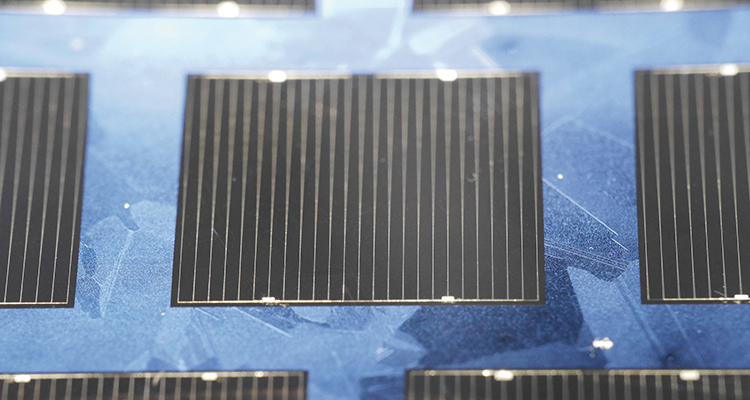Fraunhofer ISE has developed record-beating multicrystalline solar cell
The Fraunhofer ISE has developed a new multicrystalline solar cell with an efficiency of 22.3%, beating its own previous record of 21.9%.
The German solar research institute Fraunhofer ISE have beaten their own record for multicrystalline solar cell efficiency by 0.4%. A newly developed cell boasts an efficiency of 22.3%, leaving the previous figure of success – 21.9% – behind. The previous record had been set by the Fraunhofer ISE itself in February.
Manufacturing process has been adjusted
The cell works with Fraunhofer’s TOPCon cell technology. It deploys passivated backside contacts, which are applied to the rear surface of the cell without patterning. The cell is produced using a polysilicon provided by German manufacturer Wacker. The scientists have adjusted their steps during both the crystallization and the cell processing to suit the material’s needs, thus maximizing their results. All of these factors make the manufacturing process easier and help reach a higher energy yield. They also allow a reduction of charge-carrier losses.
Fraunhofer not only player in efficiency contest
Fraunhofer ISE are not the first to write history when it comes to cell efficiency. In fact, the Chinese manufacturer Trina Solar announced in July 2016 that a 20.16% efficiency had been achieved by using their multicrystalline PERC technology.
Holistic approach and TOPCon technology were key to success
“The key to our success was the holistic approach, which enabled us to optimize all steps, from the crystallization up to the individual solar cell fabrication processes. The close and continual cooperation between the characterization, crystallization and the solar cell technology research teams at ISE allowed us to reduce the loss mechanisms step by step and successfully develop an optimized process chain,” explained the Fraunhofer Institute’s Division Director, Stefan Glunz.
That, as well as the TOPCon technology, seems to have been successful. Fraunhofer has previously used the TOPCon technology on monocrystalline wafers and achieved a 25.3% effciency on a mono cell contacted on both sides in 2016.





